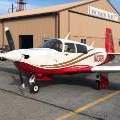Mooney Tailwind Tolerance
Mooney Tailwind Tolerance
25 members have voted
-
1. How much tailwind will you accept for takeoff?
-
01
-
2 knots1
-
4 knots8
-
6 knots7
-
8 knots0
-
10 knots7
-
12 knots1
-
14 knots+0
-
-
2. How much tailwind will you accept for landing?
-
01
-
2 knots2
-
4 knots11
-
6 knots5
-
8 knots0
-
10 knots5
-
12 knots1
-
14 knots+0
-


Recommended Posts